Revolutionizing Patient-Provider Relationships
Online primary care visits are reshaping the landscape of healthcare by making continuous, relationship-based care accessible from any location. Leveraging digital technology, these services enable patients to maintain ongoing connections with healthcare professionals, ensuring timely, coordinated, and personalized health management. As virtual care becomes more integrated into everyday health routines, understanding how it facilitates continuity and connection is essential for patients and providers alike.
Understanding Online Primary Care and Its Role in Healthcare Continuity

What are online primary care services and how do they promote continuity with healthcare providers?
Online primary care services, also called telehealth or telemedicine, utilize digital platforms such as video calls, chat, and secure messaging to deliver healthcare from a distance. These services connect patients directly with primary care providers without the need for in-person visits.
One of the main advantages of virtual primary care is its ability to foster ongoing relationships between patients and their healthcare providers. Patients can have regular follow-ups, manage chronic conditions, and discuss ongoing health concerns through scheduled or on-demand virtual visits.
These services are especially beneficial for individuals in rural or underserved areas, where access to traditional healthcare facilities may be limited. Virtual visits eliminate the need for travel and reduce wait times, offering immediate access to care when needed.
Furthermore, online primary care supports better coordination of care by enabling quick communication between providers. For example, if a specialist appointment or lab test is necessary, providers can share information seamlessly, ensuring consistent management.
Many platforms also allow for medication management, prescription refills, and preventive care, all integrated into one easy-to-use system. This continuous connection helps build trust and accountability, encouraging patients to stay engaged with their health.
In summary, online primary care enhances healthcare continuity by making regular interactions simple, quick, and accessible. It ensures that patients consistently receive the support and medical attention they need, promoting healthier outcomes and stronger provider relationships.
The Mechanics of Virtual Primary Care Visits and Their Advantages

How do virtual primary care visits work, and what are their advantages?
Virtual primary care visits are conducted through secure video or phone calls using telemedicine platforms. Patients can easily schedule these appointments via apps, websites, or by calling their healthcare providers. Once logged in, they connect with a qualified primary care provider, often within a short wait time, allowing for prompt and efficient consultations.
During the visit, the provider assesses symptoms, medical history, and concerns in a face-to-face manner, despite being remote. This setup is ideal for managing various health issues, including chronic conditions, preventive care, and behavioral health support. Many platforms, like Mayo Clinic's Primary Care On Demand or Orlando Health’s virtual services, enable seamless integration with electronic health records and additional services such as lab ordering or specialist referrals.
The main advantages of virtual primary care include increased convenience, as patients can receive healthcare from their home, avoiding travel and waiting rooms. It improves access for those in rural or underserved areas, the elderly, and mobility-impaired individuals, ensuring they can maintain consistent medical oversight.
These visits support ongoing relationships between patients and healthcare providers, fostering better communication and personalized care. They also promote early intervention, helping identify problems before they worsen and reducing the need for emergency visits. Cost savings come from lower fees compared to urgent or emergency care, and the flexibility of scheduling often means appointments can be booked with same or next-day availability.
Furthermore, virtual primary care enhances health monitoring by enabling regular check-ins, medication management, and health tracking through app reminders and continuous virtual engagement. Overall, virtual primary care not only makes healthcare more accessible and patient-friendly but also supports better health outcomes through proactive, relationship-centered care.
Features and Benefits of Telehealth Primary Care for Ongoing Relationships
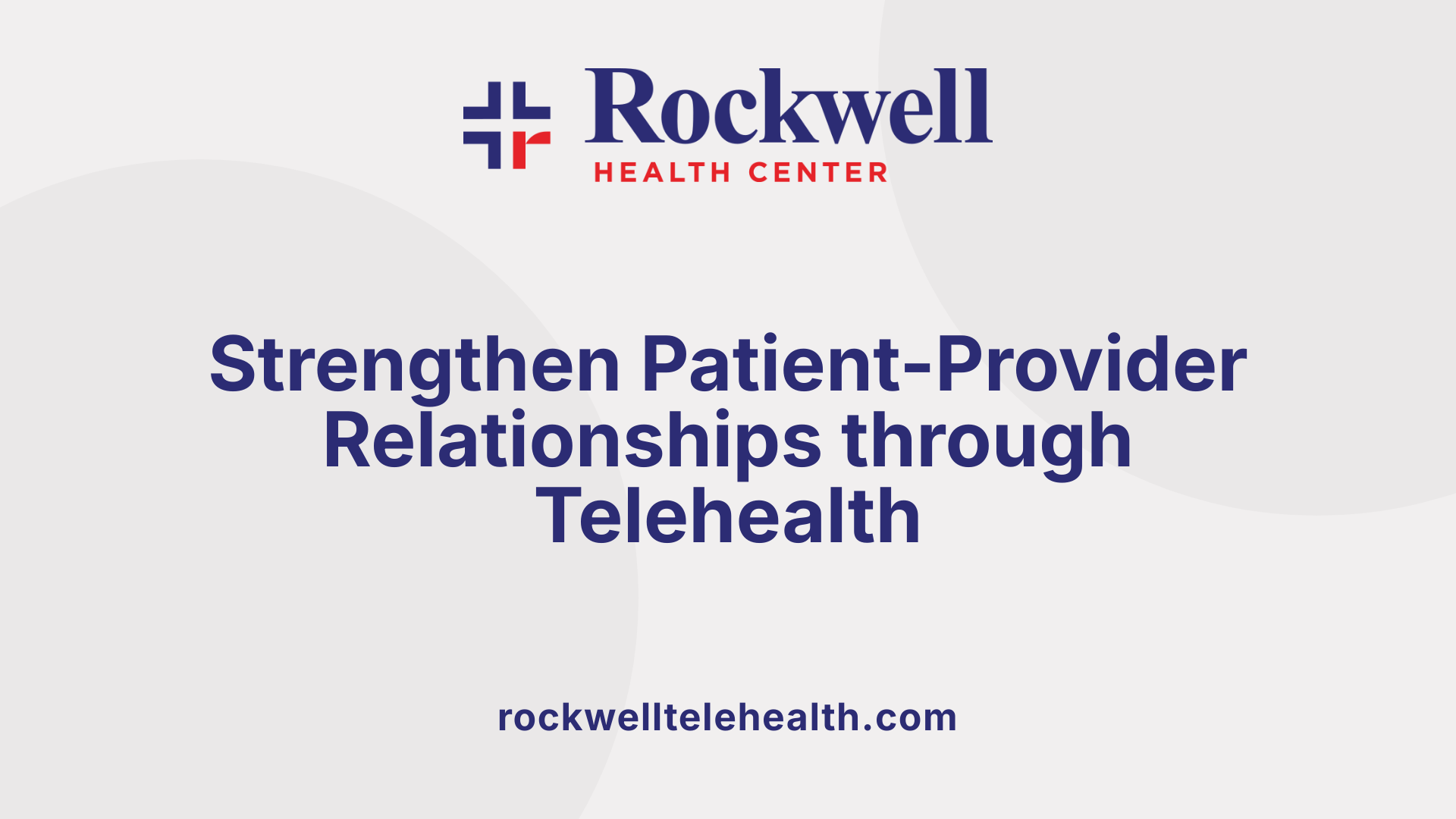
How does telehealth strengthen patient-provider relationships?
Telehealth primary care plays a vital role in building and maintaining ongoing relationships between patients and healthcare providers. By enabling continuous access, virtual visits become a convenient way for patients to stay connected with their providers regularly, whether for checkups, chronic condition management, or follow-ups.
These virtual platforms allow healthcare professionals to monitor patient health more closely through scheduled follow-ups and timely communication. Digital tools such as health apps and electronic health records (EHRs) help providers review medical histories, track treatment progress, and personalize care plans. This ongoing interaction fosters trust, engagement, and a sense of partnership in health management.
Patients benefit from avoiding the barriers of traditional visits, such as travel time, waiting rooms, and geographical limitations. This is particularly advantageous for individuals in rural or underserved areas. The seamless communication enabled by high-quality audiovisual technology enhances the clarity of consultations and encourages active participation in health decisions.
Overall, telehealth creates a convenient, accessible environment that supports a continuous, personalized care experience—improving health outcomes and patient satisfaction.
How do technological tools aid ongoing care?
Technological advancements such as secure video conferencing, messaging platforms, and patient portals are central to effective telehealth services. These tools facilitate real-time consultations, medication management, and health tracking, making ongoing care more manageable.
Many telehealth platforms integrate with electronic health records, providing providers with comprehensive views of patient history and current health status. Mobile health apps allow patients to log symptoms, receive medication reminders, and communicate with their providers between visits. These features strengthen disease management and encourage proactive health behavior.
Telehealth services also support virtual continuity with the same provider over time, fostering trust and familiarity. Many platforms offer easy scheduling, quick access to providers, and options to include family members in consultations, enhancing communication.
Some services, like mental health support, benefit from specialized tools such as app-based therapy or psychiatric management, which can be accessed from home, reducing stigma and increasing engagement.
In summary, technological tools are fundamental in making telehealth a reliable, consistent, and patient-centered approach to ongoing healthcare.
| Feature | Benefit | Additional Details |
|---|---|---|
| Virtual Consultations | Continuous patient-provider interaction | Video, phone, or chat-based visits available anytime |
| Electronic Health Records | Personalized, informed care | Centralizes patient history for better tracking |
| Mobile Health Apps | Engagement & monitoring | Symptom tracking, reminders, quick messaging |
| Family Inclusion | Shared understanding | Appointments can involve family members |
| 24/7 Access | Immediate care | Especially useful for urgent, non-emergency issues |
| Chronic Disease Management | Improved outcomes | Regular check-ins and medication adjustments |
| Lower Costs | Affordability | Cost-effective compared to in-person visits |
| Accessibility | Extended reach | Particularly for rural, elderly, or mobility-impaired patients |
This blend of features and technological advances makes telehealth primary care a powerful tool for fostering lasting, productive patient-provider relationships, ultimately leading to better health management and satisfaction.
Operational Aspects of Virtual Care and Ensuring Continuity
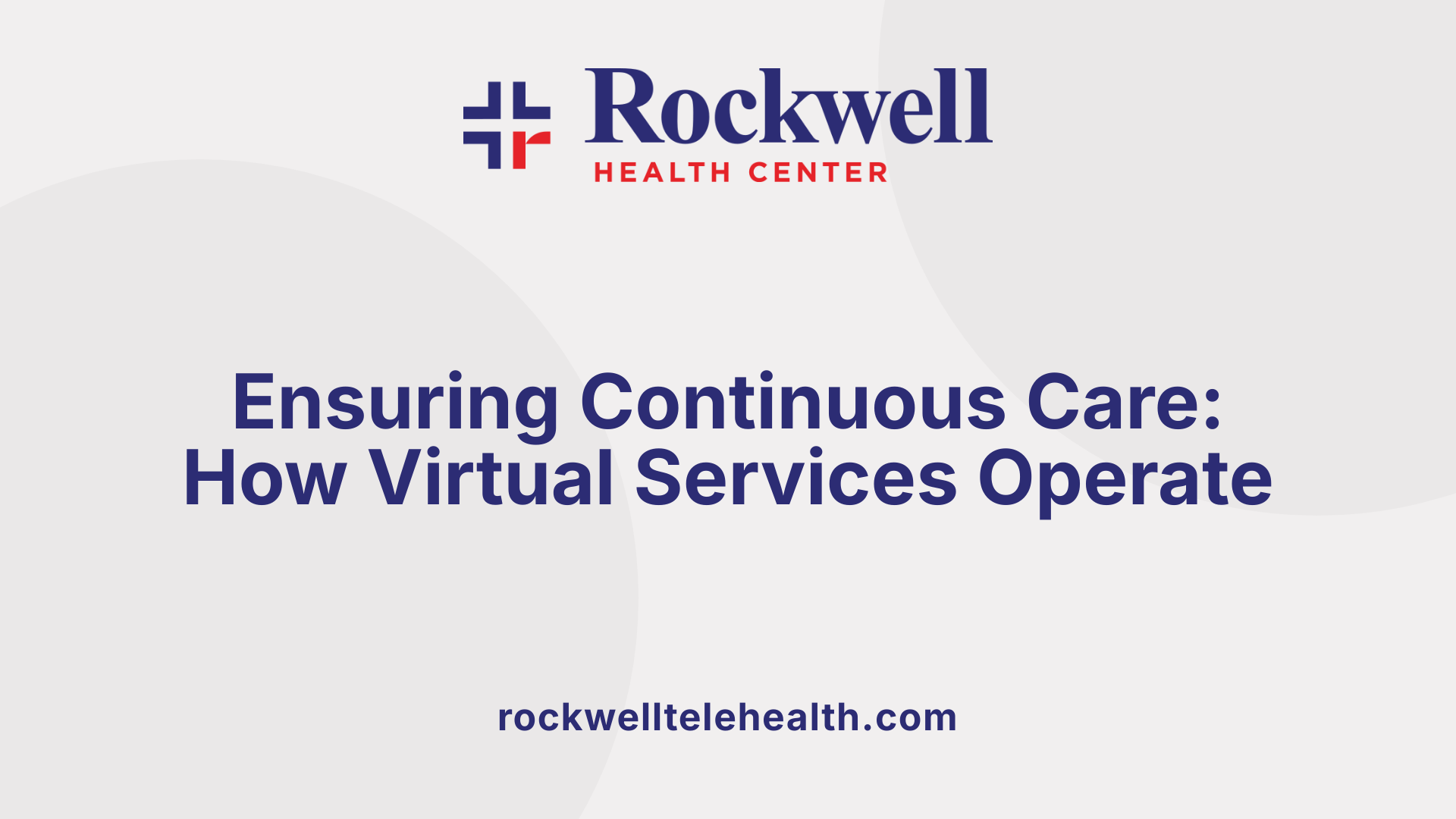
How do virtual primary care services operate to facilitate continuous care?
Virtual primary care services function through secure, user-friendly digital platforms that enable real-time interactions between patients and healthcare providers. These platforms support various methods of communication, such as live video consultations, secure messaging, and remote monitoring devices, making healthcare accessible from any location.
Most services are integrated with Electronic Health Records (EHRs), which helps providers access patients' medical history, medications, and previous visits. This integration enhances the quality of care and ensures that all healthcare providers involved have up-to-date information.
Patients can schedule preventive visits, manage chronic conditions, seek urgent care, or receive behavioral health support remotely. This flexibility not only reduces traditional barriers like travel time and long wait times but also improves access for underserved, rural, or mobility-impaired populations.
Ongoing engagement is a fundamental feature. Platforms often include features for follow-up care, medication management, and health monitoring through remote devices and patient portals. This continuous connection supports timely interventions, effective disease management, and fosters stronger provider-patient relationships.
Hybrid models that combine virtual and in-person visits offer a comprehensive approach. For example, initial assessments or complex diagnostics may occur face-to-face, while routine checkups and follow-ups are handled virtually.
Furthermore, digital tools facilitate quick referrals, diagnostics, and seamless care transitions. The result is an efficient, personalized healthcare experience that prioritizes long-term health outcomes.
In summary, virtual primary care operates via secure, connected digital infrastructure focused on continuous, coordinated care, making healthcare more accessible, responsive, and aligned with patient needs.
Range of Services in Online Primary Care Visits
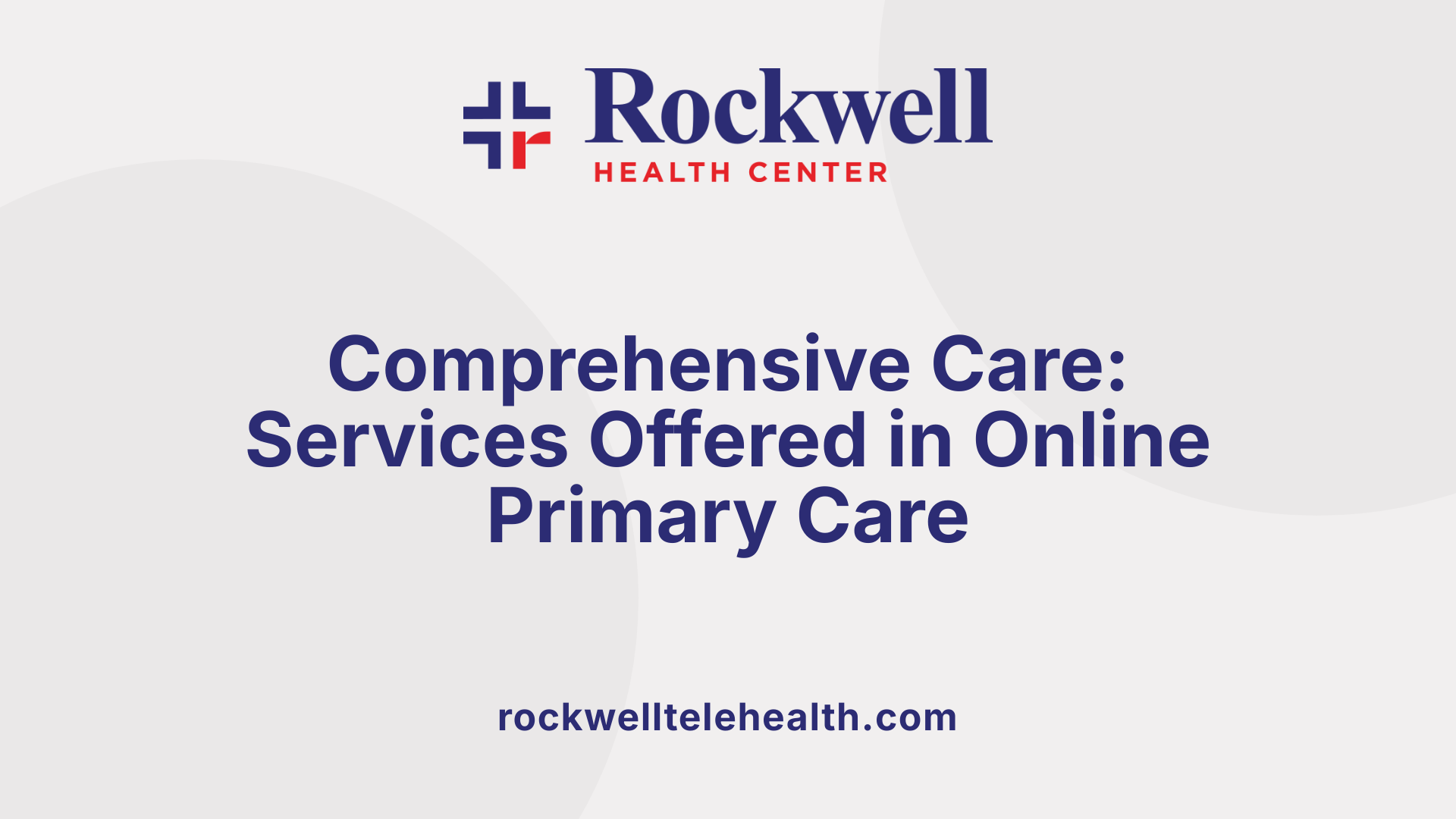
What types of care are included in online primary care visits?
Online primary care visits now cover a broad spectrum of health services, making healthcare more accessible and convenient. Patients can receive ongoing management for chronic conditions such as diabetes, high blood pressure, and respiratory issues. Virtual visits are also ideal for treating acute illnesses like colds, flu, infections, rashes, and minor injuries such as sprains.
Mental health support is a significant component of online primary care. Patients can access behavioral health counseling, therapy, and psychiatry services for issues like stress, anxiety, trauma, and grief. These virtual services help reduce barriers to mental health care, providing timely intervention without the need to visit a clinic in person.
Preventive and routine care are also offered through virtual visits, including Medicare annual wellness checks and health screenings. Additionally, virtual primary care facilitates coordination for in-person services like physical exams, lab tests, and screenings, ensuring comprehensive coverage.
Urgent care needs are met through on-demand virtual consultations, enabling patients to receive quick advice and treatment for minor emergencies. Many platforms support scheduled appointments with primary care providers or specialists to address specific health concerns.
Furthermore, virtual care supports medication management by allowing patients to request prescription refills, discuss medication effects, and ensure proper adherence. This extensive range of services emphasizes the role of virtual primary care in ongoing health maintenance, treatment, and prevention, effectively serving patients across all age groups and health needs.
The Critical Role of Telemedicine in Ensuring Connected, Consistent Primary Care

How does telemedicine enable ongoing care and patient engagement?
Telemedicine significantly enhances the ability to deliver consistent and connected primary care. It allows patients to communicate with healthcare providers through various digital channels such as video, phone calls, and chat. This flexibility means that patients can easily schedule or access immediate virtual visits, reducing wait times and making healthcare more accessible.
Through virtual primary care services, patients can maintain regular checkups, manage chronic conditions, and address non-emergency health issues from the comfort of their homes. Platforms like Doctor On Demand, Mayo Clinic, and Orlando Health offer continuous care, often including the same provider across multiple visits, fostering stronger patient-provider relationships.
Patient engagement is improved because virtual visits make discussing health concerns more convenient and less stressful. Many services support family inclusion, medication management, and health monitoring, which encourages proactive health behaviors. This ongoing connection helps in early intervention, better health management, and ultimately, improved health outcomes.
The integration of telehealth into primary care also reduces barriers such as transportation issues, mobility problems, and geographic isolation, ensuring that more people have access to quality care at their convenience. Despite some challenges like technology access and privacy, the widespread adoption of telemedicine is transforming how primary care is delivered, making it more accessible, continuous, and patient-centered.
Supporting Continued Care through Telehealth Giants and Innovators
 How do virtual primary care providers like Teladoc Health and UnitedHealthcare support ongoing patient care?
How do virtual primary care providers like Teladoc Health and UnitedHealthcare support ongoing patient care?
Virtual primary care providers such as Teladoc Health and UnitedHealthcare enable continuous health management by offering accessible telehealth services that connect patients with healthcare professionals via phone, video, or secure messaging platforms. These services ensure patients can consult their providers regularly, helping manage chronic conditions, address everyday health concerns, and support preventive care.
A major advantage is their use of digital tools like patient portals, mobile apps, and remote monitoring devices. These tools allow for real-time tracking of vital signs, medication adherence, and symptom progression, which can then be shared with healthcare providers. This technology helps strengthen long-term patient-provider relationships by fostering ongoing communication and engagement.
These platforms are designed to improve healthcare quality and accessibility, especially for those living in remote, rural, or underserved areas. They eliminate the need for travel and waiting times often associated with in-person visits.
Supported by integration with electronic health records, these telehealth services enable coordinated care, ensuring all providers have up-to-date information on a patient’s health history and ongoing treatment plans.
Regulations around privacy and security are strictly followed, safeguarding patient data during virtual visits. Despite these safeguards, challenges such as limited broadband access and technological literacy can hinder some individuals from utilizing telehealth services fully.
Overall, these innovative providers contribute significantly to the evolving landscape of healthcare by maintaining consistent health oversight, improving patient engagement, and expanding medical care to more individuals regardless of geographic barriers.
Maintaining Ongoing Healthcare Relationships through Online Primary Care

How online primary care facilitates continuous, accessible relationships
Online primary care enhances the way patients and healthcare providers stay connected, making ongoing relationships more feasible and convenient. By removing common barriers such as distance and transportation issues, virtual care allows patients to maintain regular contact with their doctors without the need for in-person visits.
With features like flexible scheduling and instant virtual appointment options, patients can seek medical advice promptly whenever needed. This accessibility is particularly vital for managing chronic conditions, mental health concerns, and preventive screenings, ensuring that care stays consistent and responsive.
Digital tools, such as patient portals, remote monitoring devices, and messaging platforms, further support ongoing engagement. These instruments help track health progress, remind patients about follow-up appointments, and enable quick communication—strengthening trust and personalized care.
Ultimately, online primary care fosters a stable and continuous healthcare relationship by making it easier for patients to connect with their providers. This hybrid approach encourages better health management, adherence to treatment plans, and improved outcomes.
| Benefits of Online Primary Care | How It Supports Ongoing Relationships | Additional Details |
|---|---|---|
| Convenience and Accessibility | Easy scheduling, no travel | Available 24/7 for urgent needs |
| Consistent Communication | Regular check-ins and follow-ups | Compatible with chronic disease management |
| Personalization and Engagement | Tailored health plans, digital tools | Supports mental health and wellness |
| Continuity of Care | Same providers for ongoing relationships | Integration with local pharmacies and labs |
This approach proves crucial in building enduring, adaptive patient-provider partnerships that uphold health and well-being over time.
Bringing It All Together: The Future of Connected Primary Care
As telehealth technology continues to advance, online primary care visits are increasingly becoming the norm for delivering high-quality, continuous healthcare. These services promote stronger patient-provider relationships through ongoing communication, personalized care management, and accessible platforms that adapt to individual needs. With the support of innovators like Teladoc Health, UnitedHealthcare, and others, virtual primary care is poised to enhance health outcomes, reduce costs, and provide seamless continuity of care—even in remote or underserved areas. Embracing this digital evolution ensures healthcare systems become more connected, patient-centric, and efficient, laying the foundation for a healthier future.





















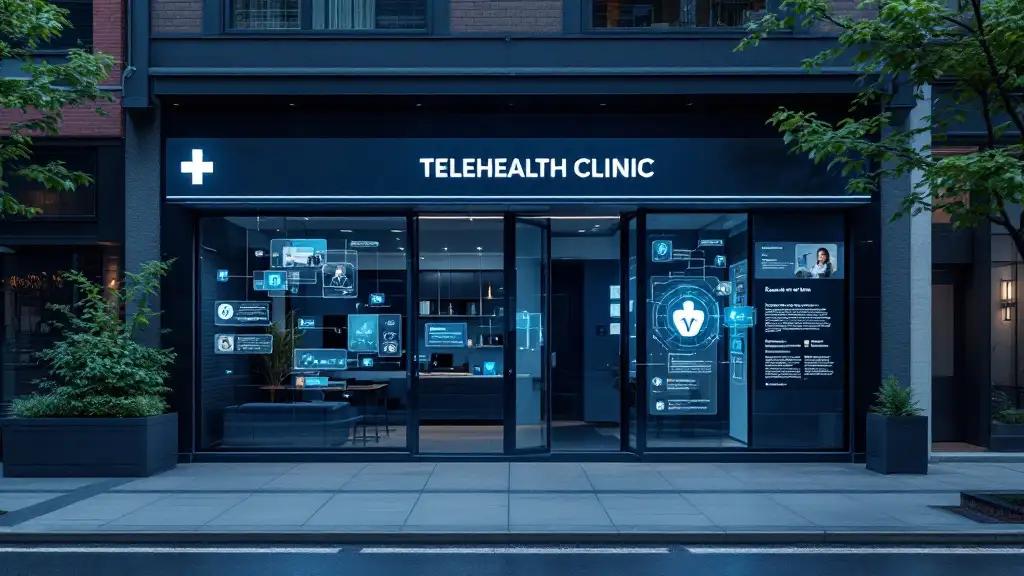













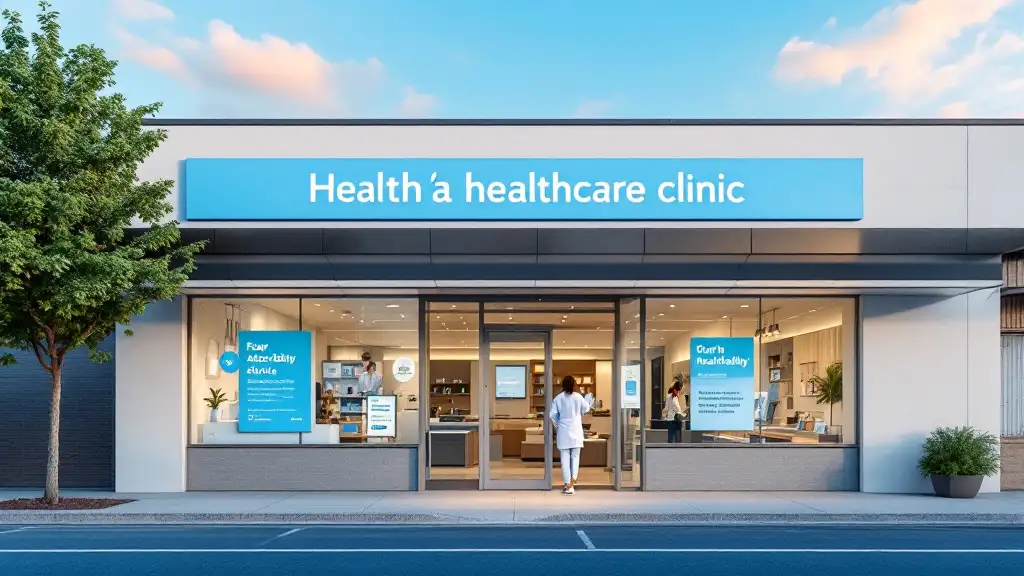




















































.png)